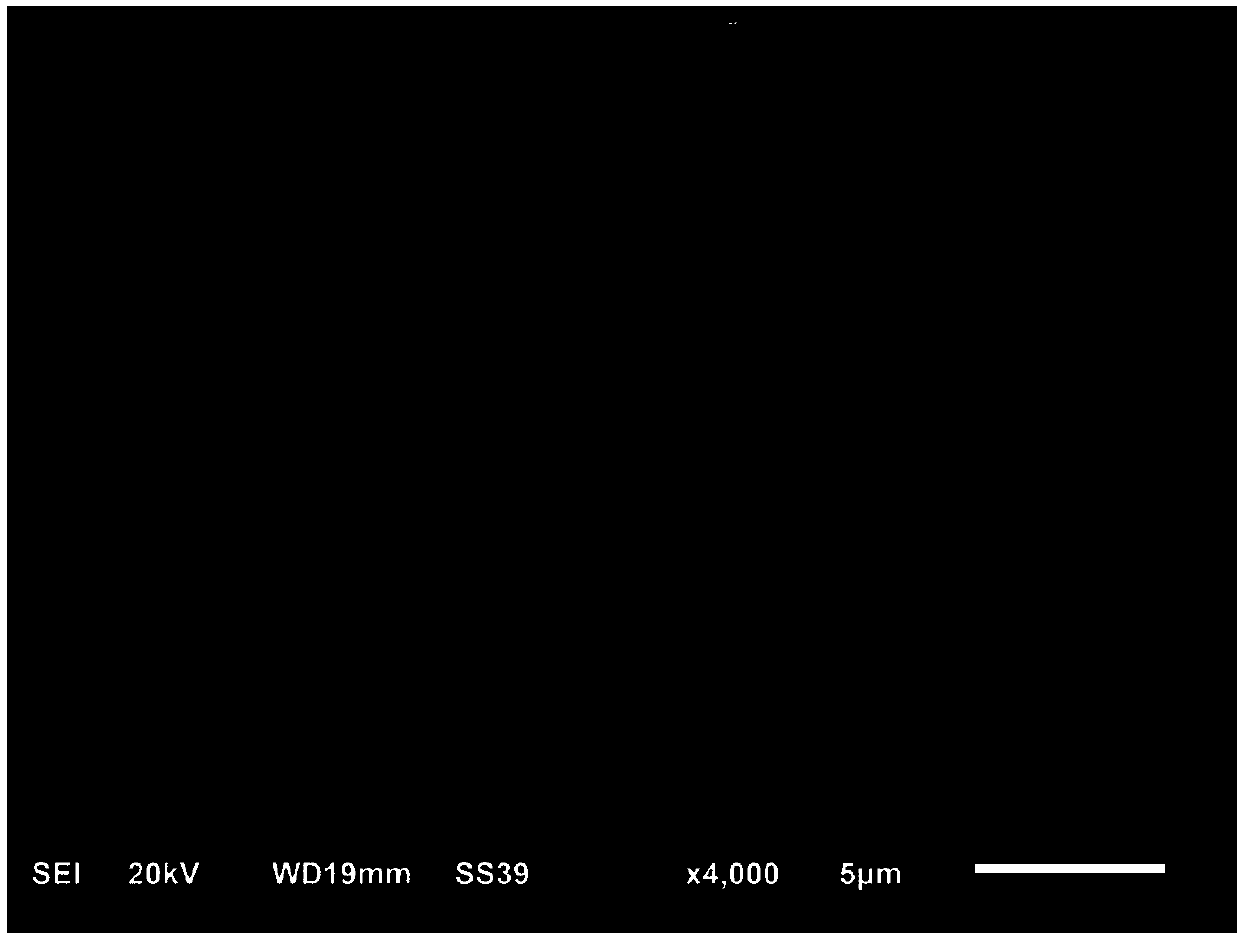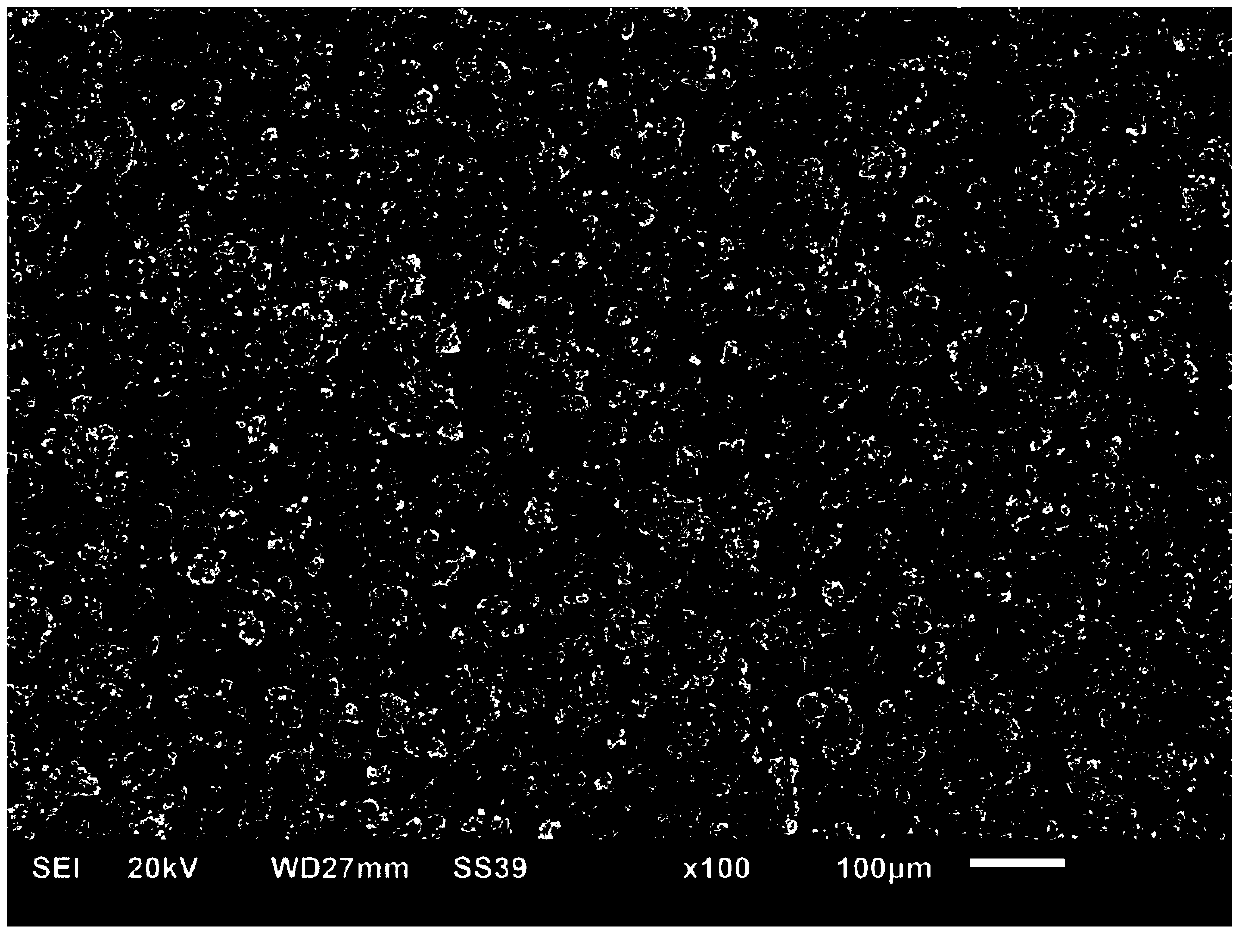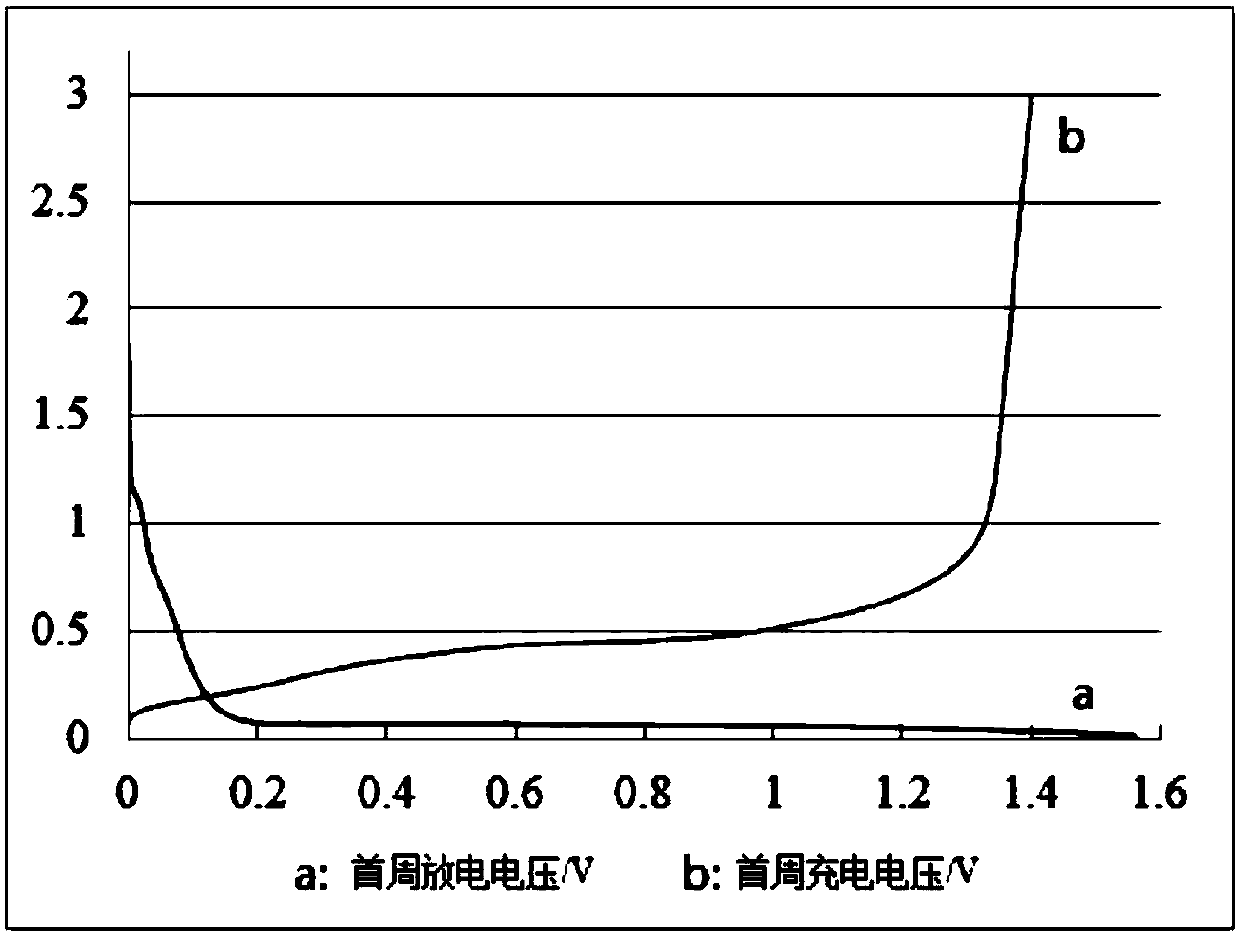Copper-aluminum-silicon alloy material and application thereof
A technology of silicon alloy materials and alloy materials, applied in nanotechnology for materials and surface science, electrical components, electrochemical generators, etc., can solve the problems of long charge and discharge time, short cycle life, and low efficiency in the first week
- Summary
- Abstract
- Description
- Claims
- Application Information
AI Technical Summary
Problems solved by technology
Method used
Image
Examples
Embodiment 1
[0057] Embodiment 1, a copper-aluminum-silicon alloy material is composed of the following parts by weight: 22-27.5 parts of silicon, 60-70 parts of copper, 0.5-10 parts of aluminum, and 0-5 parts of impurities.
[0058] The preparation method of the copper-aluminum-silicon alloy material of the present embodiment is carried out according to the following steps:
[0059] (1) Ingredients of Cu-Al-Si alloy:
[0060] Cut pure copper into φ50mm×100mm rods, pre-treat with pickling and vacuum drying before use, and control the drying temperature at 110±5°C; cut pure aluminum into 50mm×50mm×30mm small aluminum plates, and use acid before use Washing plus vacuum drying pretreatment, the drying temperature is controlled at 200±5°C; the block size of metal silicon is controlled at 5-30mm, pickling before use to remove surface impurities, and then vacuum drying, the drying temperature is controlled at 180± 5°C. The total weight of ingredients is 20Kg, according to the configuration of ...
Embodiment 2
[0080] In this embodiment, a copper-aluminum-silicon alloy material is composed of the following parts by weight: 27.5-32 parts of silicon, 58-63 parts of copper, 1-11 parts of aluminum, and 0-5 parts of impurities. And follow the steps below:
[0081] (1) Ingredients of Cu-Al-Si alloy:
[0082] Cut pure copper into φ50mm×100mm rods, pre-treat with pickling and vacuum drying before use, and control the drying temperature at 110±5°C; cut pure aluminum into 50mm×50mm×30mm small aluminum plates, and use acid before use Washing plus vacuum drying pretreatment, the drying temperature is controlled at 200±5°C; the block size of metal silicon is controlled at 5-30mm, pickling before use to remove surface impurities, and then vacuum drying, the drying temperature is controlled at 180± 5°C. The total weight of the ingredients is 20Kg, and the ingredients are as follows: 27.5-32 parts of silicon, 58-63 parts of copper, 1-11 parts of aluminum, 0-5 parts of impurities (including: titani...
Embodiment 3
[0098] The preparation method of the negative electrode material of the lithium ion battery of this embodiment is carried out according to the following steps:
[0099] (1) Ingredients of Cu-Al-Si alloy:
[0100] Cut pure copper into φ50×100mm rods, pre-treat with pickling and vacuum drying before use, and control the drying temperature at 110±5°C; cut pure aluminum into small aluminum plates of 50×50×30mm, and use acid before use Washing plus vacuum drying pretreatment, the drying temperature is controlled at 200±5°C; the block size of metal silicon is controlled at 5-30mm, pickling before use to remove surface impurities, and then vacuum drying, the drying temperature is controlled at 180± 5°C. The total weight of ingredients is 20Kg, and the proportion of ingredients: silicon 32-39%, copper 54-59%, aluminum 2-11%, other elements (titanium, cobalt, nickel, manganese, iron, boron, phosphorus, total carbon ≤ 5%) , first add part of the silicon, then add copper and aluminum, ...
PUM
| Property | Measurement | Unit |
|---|---|---|
| Particle size | aaaaa | aaaaa |
| Thickness | aaaaa | aaaaa |
Abstract
Description
Claims
Application Information
 Login to View More
Login to View More - R&D
- Intellectual Property
- Life Sciences
- Materials
- Tech Scout
- Unparalleled Data Quality
- Higher Quality Content
- 60% Fewer Hallucinations
Browse by: Latest US Patents, China's latest patents, Technical Efficacy Thesaurus, Application Domain, Technology Topic, Popular Technical Reports.
© 2025 PatSnap. All rights reserved.Legal|Privacy policy|Modern Slavery Act Transparency Statement|Sitemap|About US| Contact US: help@patsnap.com



